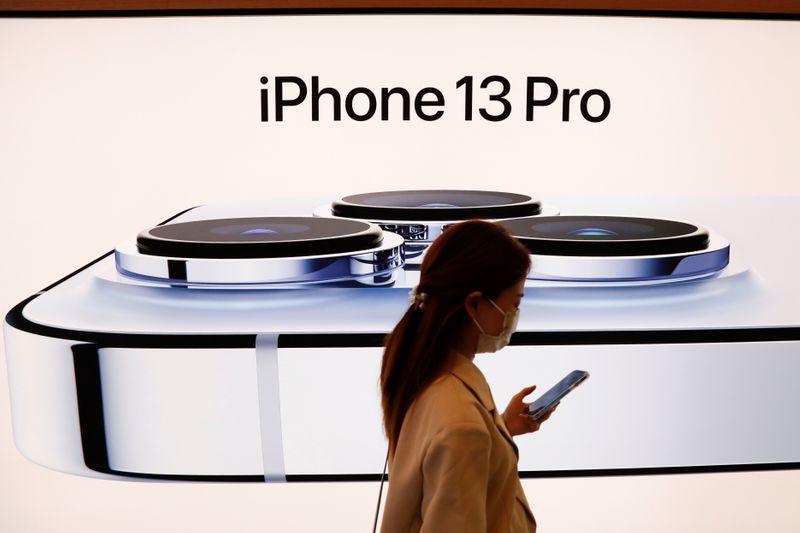Tesla shares drop after third-quarter profit falls short of estimates
KeyBanc analyst John Vinh told clients today that demand for Apple’s (NASDAQ:AAPL) iPhone lineup remains resilient with an expectation of iPhone SE.
KeyBanc’s checks showed that the customer demand for iPhone 13 remained “healthy” in March and “largely in line with store expectations.” The domestic iPhone sales likely soared 12% in March on a MoM basis, but still flat y/y.
According to Vinh, the strong demand has been fueled by: 1) better supply; 2) tax refunds; and 3) the release of the green iPhone, which is tracking slightly above store expectations.
“Store inventory levels for Pro/Pro Max increased further, and all the stores we surveyed have either Pro or Pro Max inventory vs. ~70% in February. In aggregate, Days of inventory (DOI) increased m/m to just over two days but remain lean and well below targeted levels,” Vinh said in a client note.
On a more negative note, Apple is experiencing another disappointing campaign, this time for the iPhone SE model.
KeyBanc’s data shows “disappointing” SE3 sell-through, or below store expectations. Lower-than-expected sales have resulted in high inventory for this model, which is available for walk-in customers.
The analyst explains why this may be the case.
“Promotions on other models overshadow the price advantage of the new SE3, such as AT&T offering iPhone 12 discounted at $365 amortized over 36 months vs. $430 for the SE3, both of which are 5G capable and without trade-in. Customers’ awareness for the release is relatively low and consumers’ preference for larger form factor continues to grow, despite SE3 retaining the Home button,” Vinh added.
Overall, Vinh adjusted estimates to reflect key findings from this report. The Q2 iPhone unit sales estimates remain at 58.3 million, above 57.7 million but iPhone revenues are boosted by 1.1% to $49 billion.
“Our Key First Look Data suggests AAPL is tracking somewhat in line with consensus. Historically, C1Q (Apple's F2Q) Apple Hardware is -35% q/q over the last three years, which compares to the current C1Q22 q/q consensus estimate of -29% and our estimate of -30% q/q. Our data is not currently pointing to material upside, where the main weakness we expect is around more discretionary purchases in the wearables and accessories segments. With the iPhone SE3 initially disappointing and AAPL build forecast being lowered and being replaced with iPhone 13, we slightly revise our iPhone mix assumptions,” Vinh concluded.
By Senad Karaahmetovic
